
Measuring forces between hydrophobic surfaces at molecular resolution pin-points the contribution of the quantum nature of water’s hydrogen atoms to the hydrophobic interaction. Credit: 2019 KAUST; Xavier Pita
When a thin layer of water is squeezed between two hydrophobic surfaces, the laws of classical physics break down.
From raindrops rolling off the waxy surface of a waterlily leaf, to the efficiency of desalination membranes, interactions between water molecules and water-repellent “hydrophobic” surfaces are all around us. The interplay becomes even more intriguing when a thin water layer becomes sandwiched between two hydrophobic surfaces, KAUST researchers have shown.
In the early 1980s, researchers first noted an unexpected effect when two hydrophobic surfaces were slowly brought together in water. “At some point, the two surfaces would suddenly jump into contact—like two magnets being brought together,” says Himanshu Mishra from KAUST’s Water Desalination and Reuse Center. Mishra’s lab investigates water at all length scales, from reducing water consumption in agriculture, to the properties of individual water molecules.
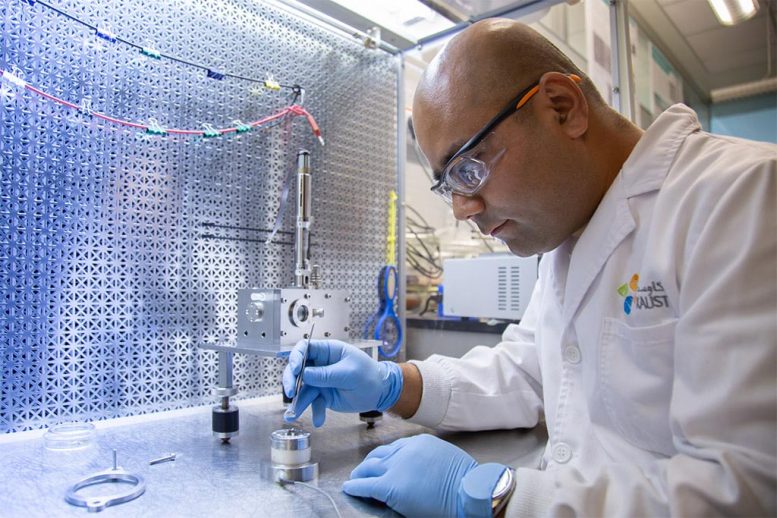
Buddha Shreshtha loads a silica disk with an ultrasmooth-surface terminated with perfluorocarbons comprising 10 carbon atoms. Credit: © 2019 KAUST
Researchers were unable to explain the phenomenon at the molecular level, so in 2016, Mishra organized a KAUST conference on the subject. “We brought together leaders in the field—experimentalists and theorists—leading to intense debates on the understanding of hydrophobic surface forces,” he says.
“This is very impressive work that shows how quantum nuclear effects in water become substantial on the nanoscale.” — Professor Mischa Bonn, director of the Max Planck Institute for Polymer Research
Part of the challenge was that the hydrophobic interaction is unique to water. “Gaining insights through other liquids or adding cosolvents to water is not feasible: the interaction is dramatically reduced or lost,” explains Buddha Shrestha, a postdoctoral researcher in Mishra’s lab.
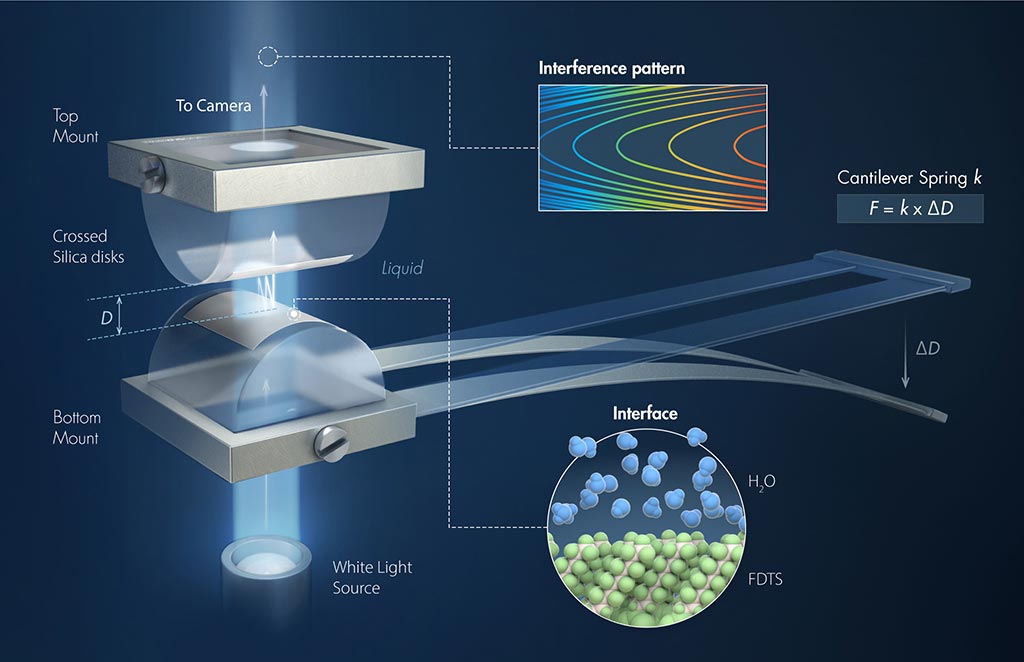
The surface force apparatus permits a surface to approach or retract at an ultraslow speed toward the firmly secured second surface. Adhesion is measured by separating the surfaces upon contact. The inset depicts the water-perfluorocarbon interface. Credit: © 2019 KAUST; Xavier Pita
Inspired by the conference, Mishra came up with the idea of comparing ordinary water with “heavy water,” in which the hydrogen atoms are replaced by a heavier hydrogen isotope called deuterium.
“Our surface force measurements revealed that the attractive force was always approximately 10 percent higher in H2O than in D2O,” says Sreekiran Pillai, a Ph.D. student in Mishra’s lab. Collaborating with Tod Pascal at the University of California San Diego, the team came up with an explanation.
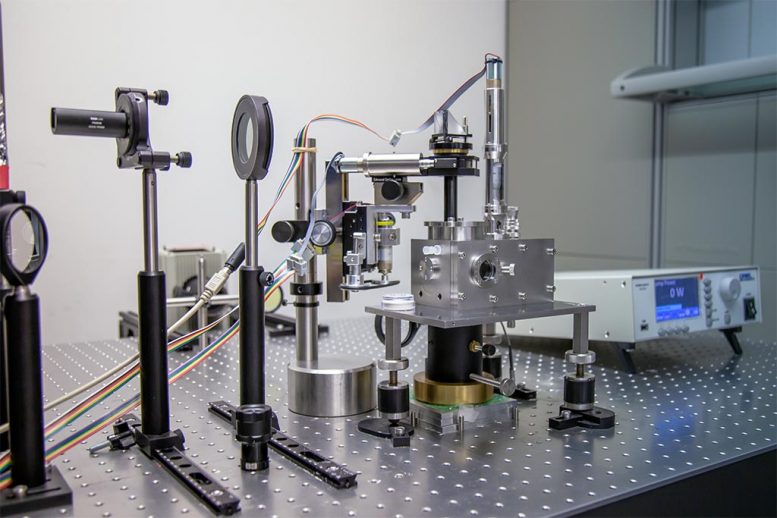
This surface force apparatus exploits light interference to resolve distances between ultrasmooth surfaces at an accuracy of 0.1 nanometers. Credit: © 2019 KAUST
The smaller an object, the less strictly it is governed by the laws of classical physics and the more it is subject to quantum effects. A tiny hydrogen atom is a quantum object—sometimes behaving like a particle, sometimes more like a wave. Deuterium, twice as heavy as hydrogen, is less subject to quantum effects. The consequence is that D2O is less destabilized than H2O when squeezed between two hydrophobic surfaces and the hydrogen bonds between water molecules get broken.
The discovery may have practical implications, Mishra says. “For example, these findings might aid the development of nanofluidic platforms for molecular separation.”
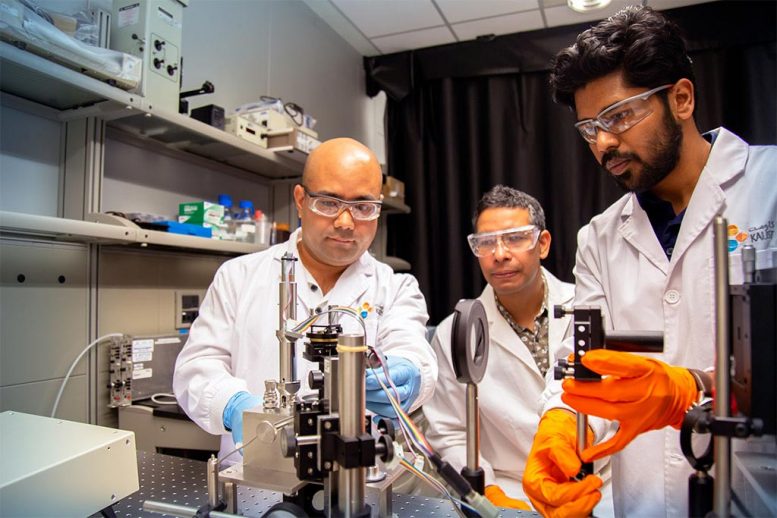
Buddha Shreshtha (left) and Sreekiran Pillai (right) fine-tune the optics of the surface force apparatus as Himanshu Mishra observes. Credit: © 2019 KAUST
“This is very impressive work that shows how quantum nuclear effects in water become substantial on the nanoscale,” explains Professor Mischa Bonn, director of the Max Planck Institute for Polymer Research. “The results illustrate that there is still much to learn about water at the fundamental level, yet with direct relevance to nanoscale-confined water in, for instance, nanopores used for water purification and desalination.”
Reference: “Nuclear Quantum Effects in Hydrophobic Nanoconfinement” by Buddha Ratna Shrestha, Sreekiran Pillai, Adriano Santana, Stephen H. Donaldson Jr., Tod A. Pascal and Himanshu Mishra, 31 July 2019, Journal of Physical Chemistry Letters.
DOI: 10.1021/acs.jpclett.9b01835


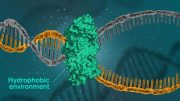



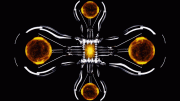

When we can’t explain something, we usually refer to the phrase “quantum effect”.